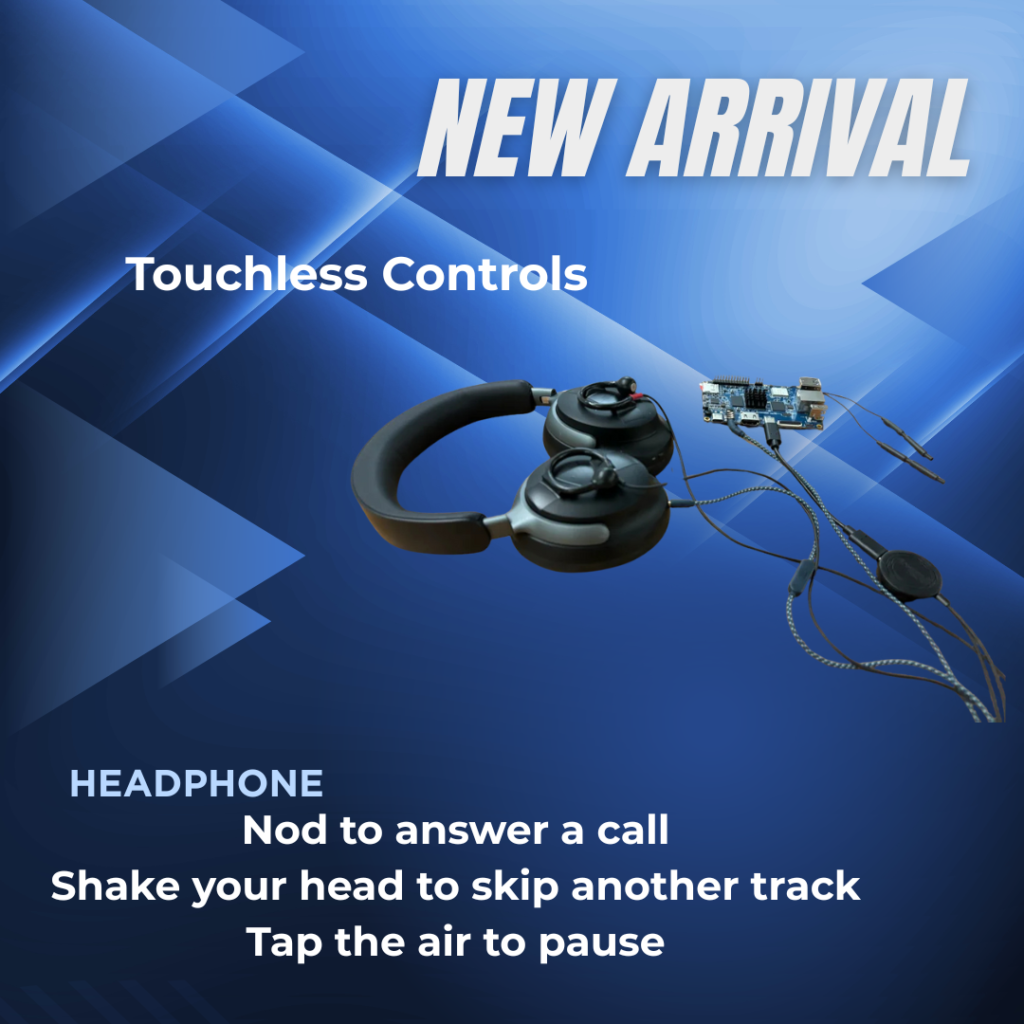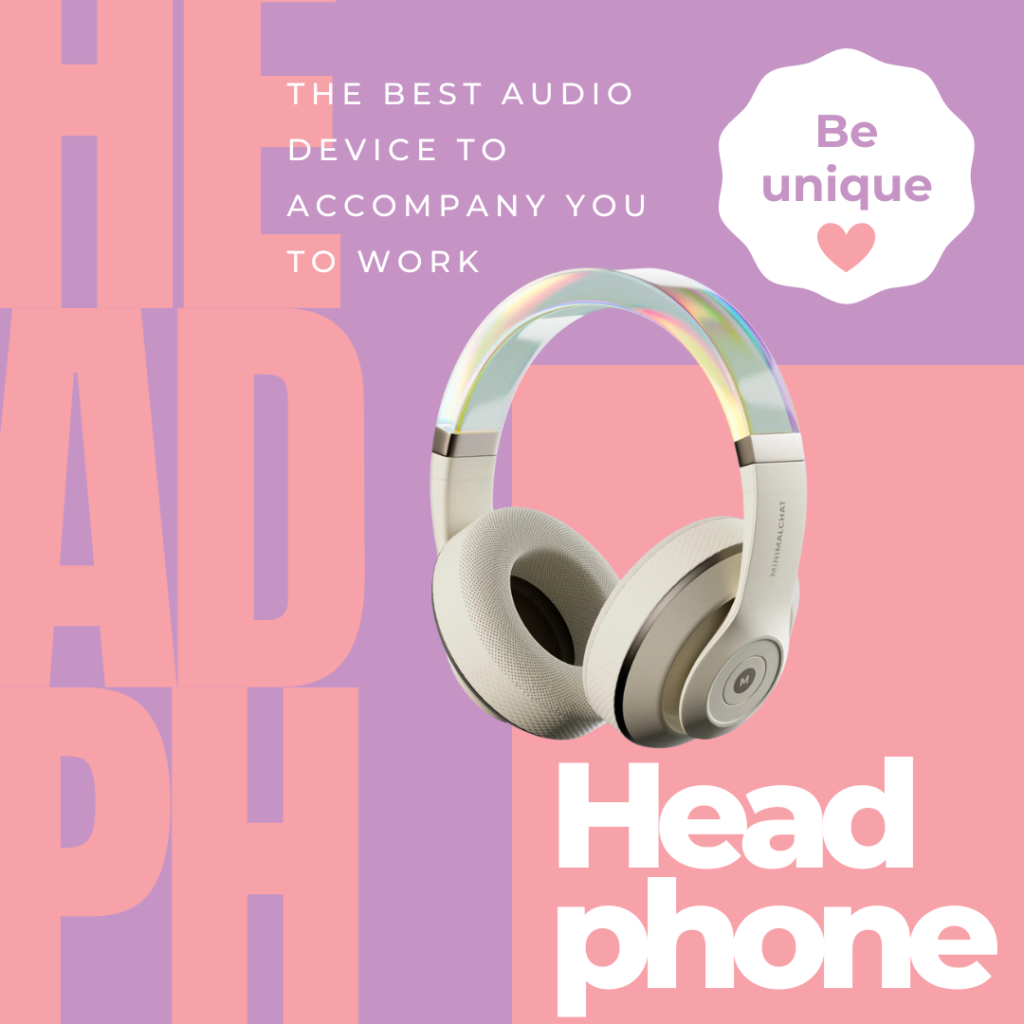The headphones sector is progressing at a rapid pace. In 2026, headphones do not serve purely for listening to sound. Instead, they come in different features: smart, sustainable, and chic. The technological advances being created today are completely transforming our expectations of these audio devices. To this day, let’s look into some of the most exciting tech trends in the headphone industry. 2026’s Headphone Revolution
1. AI-Driven Noise-Cancellation 2026’s Headphone Revolution
For decades, noise cancellation has been front and center since the ’90s. This technology, in 2026, AI has not taken over.
Lately, artificial intelligence stocks are used to make real-time adaptations to the noise-canceling process. The headphones analyze environmental noises and then block out certain noises or allow others in.
On the busy street, they block out traffic but let in voices. In the office, they eliminate chatter but let you hear notifications.
Leading manufacturers like Sony, Bose, and Apple have been at the forefront in advancing this technology. Their 2026 models incorporate the habits of their users through deep learning algorithms. The headphones learn and grow smarter with time to set preferences according to their user’s environment.
This means focusing better, talking better, and jamming music better.

2. Spatial Audio Is Now a Standard in 2026’s Headphone Revolution
Immersive sound has become mainstream. Spatial audio is no longer a feature for the rich customer base. It’s 2026, and even budget headphones come with spatial audio.
What exactly is spatial audio? The sound feels like it is truly three-dimensional. You feel inside the music or the movie.
Apple AirPods and Sony WH series deliver spatial audio equally well, if not better. This year most brands followed the trend.
The gamers loved them, movie buffs swear by them, and audiophiles enjoy a full, rich experience.
What really makes it interesting is that the spatial audio experience is available on streaming platforms such as Netflix, Apple Music, Spotify, and Disney+. And as content continues to build compatibility with this standard, your headphones will just keep getting more use.
3. Biometric Health Tracking in 2026’s Headphone Revolution
This is about fitness in detail as well as sound. Health-monitoring real-time headphones will be born as early as 2026.
To track today’s modern headphones:
Heart rate
Stress levels
Hydration
Body temperature
Blood oxygen saturation levels
These sensors are placed within earcups or buds. They usually acquire data using skin contact merged with infrared light. Some models may even be integrated with a fitness app or smartwatch.
“As for Bose Fit+, it will send you an alert when it notices your elevated stress level.” Jabra’s newest and unreleased Elite Health lets you analyze hydration levels and gives alerts when it’s time to take a sip of water.
It will now transform headphones into wellness buddies. Now, not only do you listen, but you actually live a “smarter” life.
4. Ultrasonic Audio Transmission
And in 2026, there’s no wearing anything at all. It’s coming to ultrasonic sound delivery.
Researchers at Penn State University built a system that focuses sound directly into your ears. No headphones.
Using focused ultrasonic waves along with metasurfaces, this system creates “audio bubbles.” Only if you’re inside the bubble can you hear the sound; no one else around will hear a thing.
This cutting-edge technology is still in its initial stages, but it is already being incorporated into experimental devices and certain public installations.
You could walk into a café, slide into a booth, and then be serenaded by something only you can hear—without touching a phone or wearing anything.

5. Eco-Friendly and Sustainable Designs
It is in every twist and turn, every cranny and nook. Even shoulder veils, it is there.
In 2026, every brand will boast of sustainability.
By these are now using:
Recycled plastics
Vegan leather
Biodegradable materials
Low-impact packaging
Urbanista and House of Marley are leading this movement. Their produce derives from bamboo, recycled aluminum, and natural fibers. Even tech giants have eco-headphones in their inventories.
These options do not compromise on quality, which includes sound, noise cancellation, and comfort, but they do so at a lower carbon footprint.
Consumers now want sustainability, and headphone makers hear them. 2026’s Headphone Revolution
6. Solar-Powered Headphones
The battery concern has remained for long. But now, the sound is powered by the sun.
Urbanista has produced solar-powered headphones needing light to charge. Indoor or outdoor, any available light source can charge this battery.
This type will be in a number of brands slated to drop in 2026. These headphones feature solar photovoltaic panels that generate electricity from light.
Forget about cords. Forget about wall chargers. Just continuous play.
Game-changer for the traveler: more convenience for the commuter, fewer batteries, and less waste for the planet.
7. Bone Conduction 2.0 in 2026’s Headphone Revolution
Bone conduction headphones have existed for some time. But in 2026, this alloy would undergo refinement.
These headphones send and transmit sound through your bones, not through the ear. The tremors set off vibrations on your cheekbones or jaw, which you recognize as music.
This leaves the ear in its natural state. You remain vigilant. Hence, runners and cyclists cherish it.
Now that new material and chips are applied, the sound is much better than before. The first iterations had somewhat of a tinny sound. The present ones produce great full-range audio with less distortion.
Shokz and Philips excel in this space; the latest models come with even longer battery life and waterproof construction with a touch of enhanced bass.
Bone conduction headphones are fast becoming the choice for more audiences than just athletes. They serve multitasking and outdoor safety.
8. Solid-State Audio Drivers
Headphone drivers are experiencing an upgrade. Traditionally, magnets and coils are employed. In 2026, many companies are adopting solid-state drivers.
This driver, like xMEMS, employs silicon rather than moving parts. So clearer sound, less distortion, and greater durability.
The solid-state driver saves space, which results in small and light headphones with big sound.
This one is ideal for earbud applications. You get studio-quality sound out of a tiny package.
9. Smart Assistants Built-In
Headphones nowadays can do much more than just play music. In 2026, they also act as your personal assistant. Ever since built-in smart assistants like Siri, Google Assistant, and Alexa came along, it has gotten quite advanced. But even that is not the whole story.
Presently, AI assistants can also
Read out your emails.
Translate languages in real-time;
Call your friends through voice commands —
Keep you updated on your travel plans.
You enter an airport. Your headphones guide you about your gate, delay, and direction—all hands-free. This year, even budget models have gone the route of ordering by voice. Just say something, and it does.
10. Adaptive Sound Profiles
Everybody hears differently. Well, in 2026, headphones sit down and learn how your ears work.
Adaptive sound profiles conduct hearing tests and utilize AI to deliver an audio experience specifically tailored for you. Some headphones even adjust equalization according to age or hearing sensitivity.
Brands like Nura and JBL have done this already. Their apps test your hearing and adjust the output.
This trend has had a quick uptake. Expect many more brands to adopt personalized audio as standard.
That means clearer sound with balanced bass and bright highs, tailored for you. Camera
11. Multi-Device Connectivity
Everyone has multiple gadgets. Includes straight talk phones, tablets, the best laptops, smartwatches, and, by 2026, all handled by the headphones.
The latest feature is instant switching. Finish watching a movie on a tablet and pick up a call before the movie ends on your phone without interrupting the experience.
Bluetooth 5.4 and LE Audio bring faster pairing and transitioning, longer battery life, and better sound quality.
This multi-device option is very convenient; you don’t need to unpair and re-pair each time.

12. Touchless Controls
Buttons just ceased to exist. Touchless controls are all the rage.
Using motion sensors and gesture recognition, you can:
Nod to answer a call
Shake your head to skip another track
Tap the air to pause
Even Sony and Bose are introducing this into their flagship models; even mid-range headphones will use this kind of hands-free technology in 2026.
Comfortable, especially when you’re moving about and have gloves on.
Final Thoughts
Headphones that are smart, greener, and more immersive exist in 2026. From sound powered by AI to solar power and ultrasonic audio, this innovation will break records in the coming year.
All these trends prove one point: that Beats headphones do not sound like accessories anymore. They are becoming personal hubs for entertainment, health, and productivity.
For those who are going to shop for headphones this current year, these features are what you must look into. They will definitely redefine how you hear the world. more
3 Responses